My Fine Leaf Thyme plant became the center of attention when a visitor seemed almost enchanted as she approached it. Her reaction made me a bit curious about the importance of this little plant.
Thymus Vulgaris, better known as Fine Leaf Thyme, is a woody, aromatic herb native to the Mediterranean and surrounding regions. It is well-known for its pleasant aroma and intense flavor but also possesses several medicinal benefits that are often overlooked.
Before this, I knew it was a popular seasoning. Yet, I was captivated by the numerous uses, benefits, and shared value of this common Thyme.
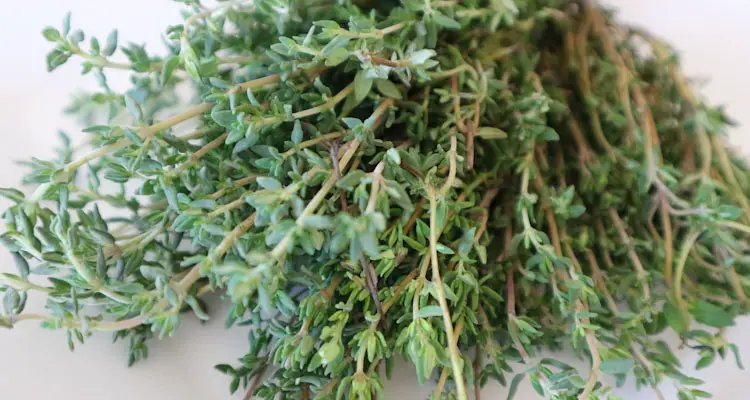
This article will explore some of the intriguing benefits of this versatile herb and a simple method to ensure you have an endless supply all year round.
Let’s dig in!
What Is Another Name For Thymus Vulgaris?
Before we look at the benefits, let’s ensure we are on the same page since the common names can cause some confusion.
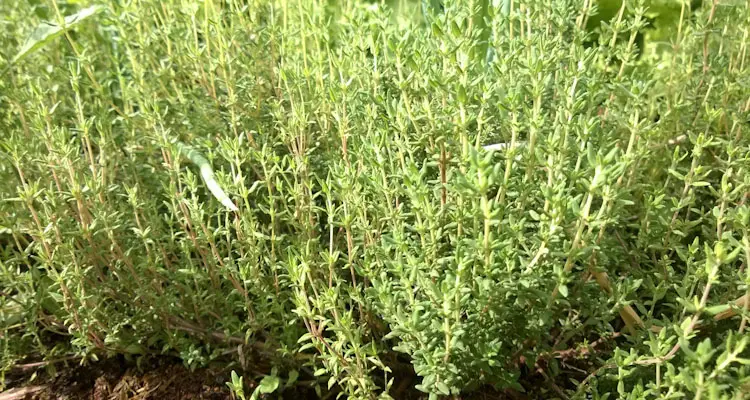
Thymus Vulgaris is known by several other names, including Garden Thyme, Common Thyme, Fine Leaf Thyme, or simply Thyme. However, different varieties also share similar common names, even though their flavor profiles and appearances may differ considerably.
As a result, confirming the variety when purchasing or using Thyme for a specific purpose is a good idea. Thankfully, most of these plants belong to the same family and share similar characteristics.
What Are The Benefits Of Fine Leaf Thyme?
Thymus Vulgaris is a member of the mint family, Lamiaceae, which is well-known for its culinary and potential health benefits.
Fine Leaf Thyme contains Vitamins, Thymol, Caravol, Flavonoids, Phenol, and other chemical compounds, proven to have various medicinal and nutritional benefits. It is typically valued mainly as a food seasoning, but it is occasionally used in folk medicine.
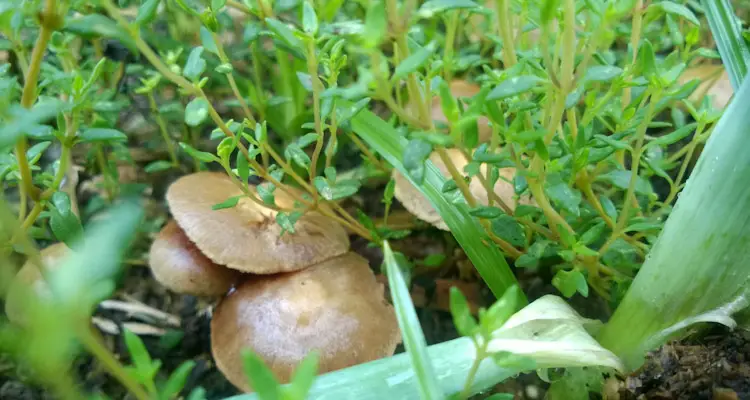
For example, the essential oil extracted from Fine Leaf Thyme can be used as a food flavoring and preservative. However, it contains flavonoids, proven to have anti-microbial and antioxidant properties, suggesting potential application to overall health.
Several studies have proven Fine Leaf Thyme extract’s ability to treat specific gastrointestinal issues in humans and animals. It showed promise when used against parasites and certain fungi, resulting in ongoing studies in this regard.
Traditionally, it was brewed into tea and drunk to treat coughs and other respiratory illnesses. However, studies suggest that Thymus Vulgaris essential oils are more potent and, therefore, better for aromatherapy and even some culinary applications.
In short, Fine Leaf Thyme has anti-microbial and immune enhancement properties. These properties suggest potential medicinal and therapeutic benefits, many of which have not yet been explored.
However, as with any potential alternative medicine, you should consult your physician if you intend to use Thyme for any other reason than culinary applications.
How To Use Fine Leaf Thyme
Fine Leaf Thyme is a must-have in any kitchen. It has been used in pasta, pizzas, stews, soups, and even teas for centuries. While it has some excellent medicinal benefits, it is typically used for culinary, therapeutic, and even ornamental purposes.
Culinary Uses
Fine Leaf Thyme is often described as having an “agreeable aroma and pungent flavor.” In other words, it smells nice and tastes fantastic! It is used fresh, dried, powdered, or as an essential oil to add flavor to various dishes.
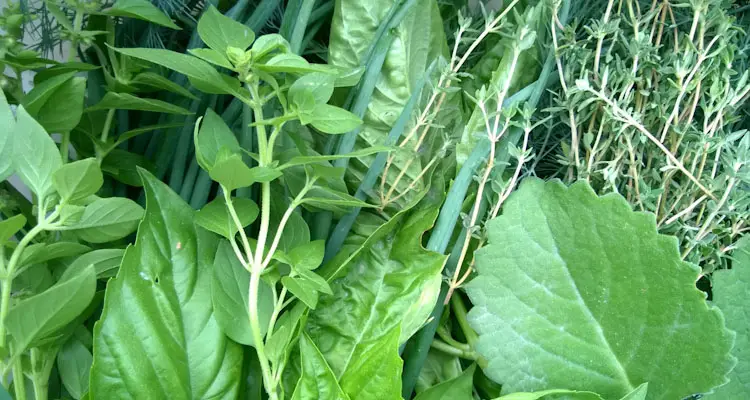
Seasoning: Common Thyme has an intense flavor and is used to season fish, meats, and dishes. It is added to various sauces such as Green Seasoning and used as a condiment.
You can purchase mixes made from dried Thyme, Parsley, and Oregano at the supermarket or make them yourself at home. It’s a lot easier than you’d expect.
Thymus Vulgaris Tea: Thyme tea is often used for treating coughs and other respiratory illnesses. Many people simply enjoy drinking a cup of thyme tea for its mild taste and soothing effect.
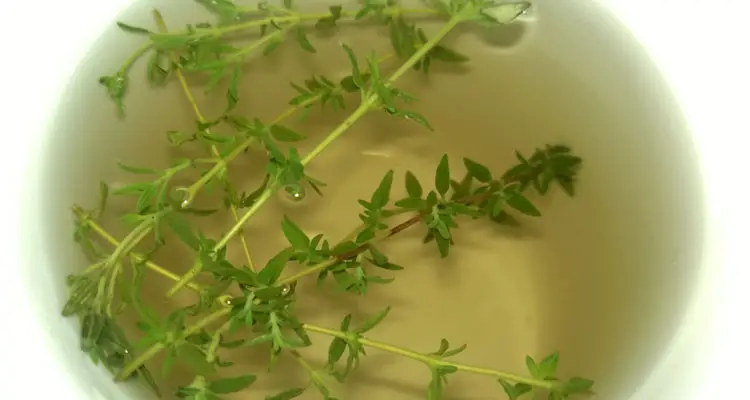
You can brew Fine Leaf Thyme tea by adding some sprigs to a cup of boiling water and allowing it to draw for 5 to 10 minutes. Add a bit of honey or FFJ to taste and enjoy.
Medicinal Uses
Fine Leaf Thyme’s essential oil is also used for medicinal purposes. This oil is mixed with other carrier solutions to treat skin irritation and bad breath.
It is used extensively as a mouthwash and reportedly is effective in treating sore throat and other oral ailments.
The essential oil can be added to a diffuser or steaming hot water to treat various respiratory issues.
Ornamental Uses
Benefits aside, some people just like to look at it. In fact, Fine Leaf Thyme makes a beautiful ornamental plant and can be grown in flower pots to decorate rooms or gardens.
By nature, Thymus Vulgaris is a flowering plant with added benefits of attracting pollinators such as bees while releasing a pleasant aroma on gentle breezes.
How To Grow Fine Leaf Thyme
Fine Leaf Thyme is easy to grow both from seeds and cuttings, but requires some patience. It grows best in well-drained, moist soil, which receives full sun and unrestricted airflow.
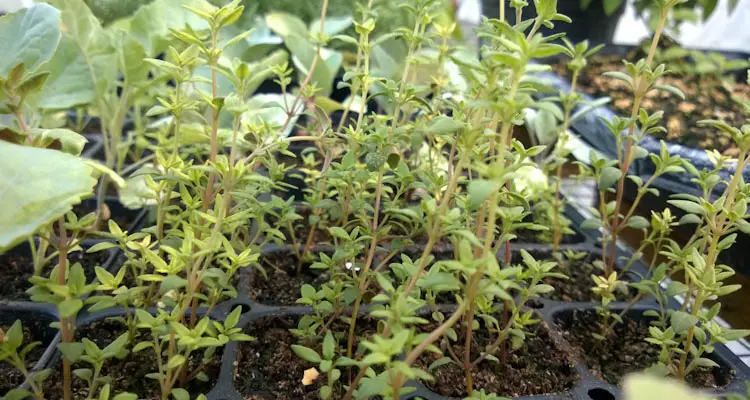
Being a Mediterranean herb, it can tolerate periods of dryness but struggles during prolonged exposure to soggy soil.
Regardless of the method, it is best to use a potting mix to propagate Thyme, either in a nursery or indoors, then transplant it to the desired location. Here are some simple ways to propagate Fine Leaf Thyme.
Grow Thyme Plant From Seeds
To sow seeds, you will need to first fill a small container with some moist potting mix. Sprinkle some seeds onto the moistened media, then cover with a thin layer of the growing media.
Moisten the surface with some water using a spray bottle. Cover the container with a piece of cardboard and place it in a cool, shaded area.
Usually, the seeds germinate within a week or two in our climate but might take up to a month in cooler regions. Monitor the container periodically for signs of growth.
After germination, allow the seedlings to grow for another two to three weeks before attempting to separate and transplant them.
Grow Thyme Plant From Cuttings
Fine Leaf Thyme is super easy to grow from cuttings. You need pieces from a mature plant, some potting mix, and a container. If you have rooting hormones, that will be useful but not necessary.
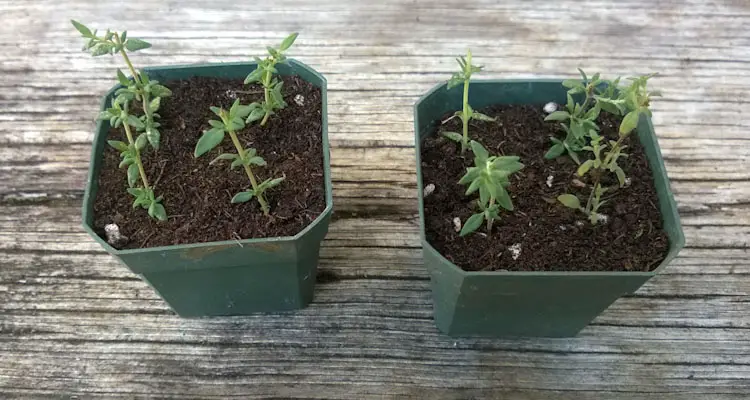
Use a micro-tip pruner of scissors to cut a piece of Thyme about 4 to 5 inches long, with leaves intact. This is called a sprig.
Fill a container with moistened potting mix. You can use small cups, potting trays, or small flower pots.
Strip away the lower half of the leaves from the thyme sprig using your fingers. Then, stick the stem into the moistened mix. Suppose you have access to rooting hormone or cinnamon powder. You can dip the striped section into it before sticking it into the potting mix.
Water the newly-planted cuttings using a spray bottle or dipping them into a container of water. Then place the cuttings under a humidity dome or plastic bag in a cool, partly-shaded area.
Transplanting and Caring For Fine Leaf Thyme Plant
Once the Thyme plants are ready, you will have to transplant them into larger pots or the garden.
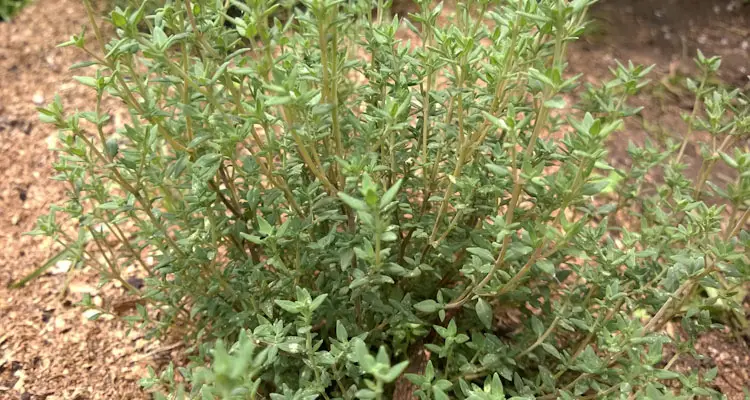
Separate the plants if necessary before transplanting them to larger pots. However, avoid disturbing roots if you intend to transplant them directly into the garden.
Once transplanted, water them daily during the first week. You can use a homemade organic fertilizer such as JLF or a solution containing FPJ to help limit transplant shock.
Once established, Fine Leaf Thyme should be watered when the first inch or two of soil dries out. Remember, it does not grow well in waterlogged soils.
How To Dry And Store Fine Leaf Thyme
Once mature, Fine Leaf Thyme must be regularly pruned to become bushy and remain healthy. This means that you’ll soon have more leaves than you can realistically use. Fine Leaf Thyme can quickly be dried and stored for later use.
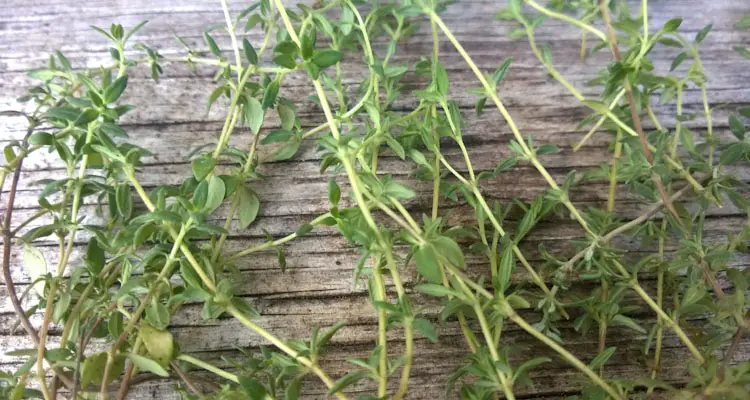
To dry Fine Leaf Thyme, you can harvest the sprigs as you would generally prune the plant. Tie and hang the sprigs in the sun or a paper bag in a well-ventilated area. The leaves will dry and start to fall within a few days. So, ensure you make preparations to collect the dried leaves.
Once properly dried, you can store the leaves in a bottle, either whole leaves or ground, into a powder. Some people like to mix it with other dried herbs such as Parsley to make a tasty blend.
Dried Fine Leaf Thyme can be used as a substitute for fresh leave. However, you must remember that dried herbs are much more potent than when they were fresh. As a result, you will need to adjust your measurements when using it.
Generally, 1 teaspoon of dried Fine Leaf Thyme leaves or ¾ teaspoon of thyme powder equals 1 tablespoon of fresh leaves. (Approx. 6 sprigs)
Final Thoughts
While Fine Leaf Thyme is a Mediterranean herb, it has been a part of Caribbean culture and cuisine for decades. It is often bundled with other herbs such as bunching onions and sold as seasoning mixes.
It is seldom seen by most people as a medicinal herb. Still, it possesses numerous nutritional, therapeutic, and health benefits, most of which are linked to the chemical composition of its essential oil.
Fine Leaf Thyme will always be a beneficial addition to any garden and kitchen pantry regardless of its intended use.
Related Questions:
What Can I Substitute For Thyme Leaves?
Oregano is often used as a substitute for Thyme leaves since it has a similar but intense flavor. However, Parsley, Sage, and Rosemary are potential alternatives, but with a slightly different flavor and aroma. These can be used individually or mixed for a more balanced profile.
Where Do I Find Fine Leaf Thyme In The Grocery Store?
You can usually find fresh Fine Leaf Thyme in the Produce section of grocery stores, either sold individually or as part of a mix. The fried leaves and powders are typically located near other bottled seasonings and dried condiments.
References
Botanical. Garden Thyme. botanical.com. Accessed June 2022
Biomedical And Pharmacology Journal. The Potential Gastrointestinal Health Benefits Of Thymus Vulgaris Essential Oils. biomedpharmajournal.org. Accessed June 2022
Journal Of Applied Biology and Biotechnology. Medicinal And Functional Values Of Thyme (Thymus Vulgaris L.). (PDF) Accessed June 2022

